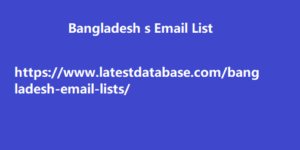munity Sstrategist, team lead, marketing director
, VP, CMO, and agency founder. He’s helped dozens of companies improve their content marketing and SEO, including Google, Zapier, GoDaddy, Clearbit, and Algolia. He’s also a novelist and the creator of two content marketing courses. Article Performance Data from Ahrefs Linking websites 85 Sign up for Ahrefs Get SEO metrics of any website or URL. Get the week’s best marketing content Email Subscription Enter your email Subscribe Evolve – Singapore – October 24-25 Contents Harmful over-
optimization 1. Keyword stuffing
2. Building links with exact-match anchor text Time-wasting over-optimization 1. Aiming for perfection on Core Web Vitals 2. Fixing every single redirect chain 3. Optimizing every single meta description and title tag Search optimization is generally a good thing. When you create something useful—an article, a product page, even a free tool—it helps to ensure people can find it through search. But can you go too
far? Can you over-optimize? Google says
“yes”, in two ways. Harmful over-optimization Harmful over-optimization is, as Google’s Gary Ilyes puts it, “literally optimizing so much that eventually it starts hurting.” It’s possible to put so much effort into trying to rank that your pages cross into spam territory—and Google can reduce the rank of your content, or choose not to rank it all. Google today is generally very good at identifying—and ignoring—many types of over-optimization. But there are a couple of tactics that still carry the risk of incurring manual penalties. 1. Keyword stuffing Keyword stuffing is the process of cramming a page full of keywords, in an attempt to rank higher for those keywords. You’ll recognize keyword stuffing when you
see it: keywords and their synonyms are
repeated over and over, in sentences Bangladesh Email List and paragraphs that don’t really make sense. Finding the top mirrorless camera can be a daunting task. Yet, with our comprehensive best mirrorless camera guide, we simplify the process by ranking the best mirrorless camera models and the most reliable mirrorless camera brands. It’s good practice to include keywords in relevant places, like titles or meta descriptions: you’re signaling to robots and humans alike that your page is focused on a particular topic. But while keyword targeting helps pages appear in search results for relevant queries, keyword stuffing can have the opposite effect, turning helpful content into spam. For Google, more keywords are not always better
—and some pages even rank for keywords
they don’t mention. Our blog post about canonical tags ranks #1 for the keyword “canonical tagging”: Organic keywords report in Ahrefs showing a first-place ranking for the keyword “canonical tagging” Despite the fact that “canonical tagging” isn’t mentioned anywhere on the page: Screenshot showing an article about canonical tags that doesn’t not include the phrase “canonical tagging” You don’t need to cram keywords into every inch of your article. Write about your topic in useful detail, and create clear, relevant titles and headers, and you’ll mention plenty of keywords without any extra effort. 2. Building links with exact-match anchor text Anchor text refers to the clickable words in a link to your website. For example, this link has the anchor text “google rankings”: Screenshot showing an example of anchor text
in a blog post When this anchor text matches
the target keyword of the B2B LEAD GENERATION COMPANIES IN DUBAI page it links to, it’s called exact match anchor text. This can be helpful: Google looks at the anchor text of your backlinks to help understand what the page is about (and what it should rank for). anchors can be a clear sign to Google that links are being bought or influenced: something which is overtly against Google’s spam policies. Natural backlink profiles contain a mixture of different types of anchor text: some exact match keywords, but usually many more partial match keywords, brand references, naked URLs, image links, and random words. Here’s an example of a natural backlink profile: Anchors report in Ahrefs showing different types of anchor text, including citation, empty anchor, brand and naked URL Link-building is a core part of SEO, but it’s not helpful to obsess over the anchor text of every URL

